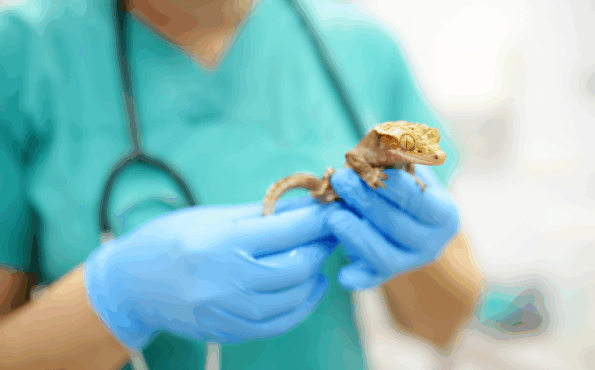Reptiles are fascinating pets, bringing a unique slice of the wild into your home. However, caring for them, whether it’s a chilled-out bearded dragon, a curious corn snake, or a graceful tortoise, can be surprisingly complex and tricky to master. Keeping them happy and healthy is key, but it requires understanding their specific needs.
While reptiles are generally tough little critters, they can face some common health issues – many of which you can avoid with the right care and attention to detail.
In this guide, we’ll break down five common reptile health problems, explain how to spot them, and share simple tips to keep your scaly buddy in great shape.
1. Anorexia (loss of appetite)
One of the biggest worries for reptile owners is when their pet suddenly refuses to eat. While it’s normal for reptiles to skip meals during certain times – like shedding or brumation (think of it as a reptile’s version of hibernation) – a prolonged loss of appetite is a red flag.
What to watch for:
- Your reptile stops eating completely.
- Noticeable weight loss.
- Lethargy – less energy or hiding more than usual.
What to do:
First, figure out the cause. A trip to the vet can help rule out underlying health issues. For environmental problems, like the wrong temperature or lighting in their tank, small adjustments may do the trick. If it’s a medical issue, vets might suggest assisted feeding or meds to get your pet back on track.
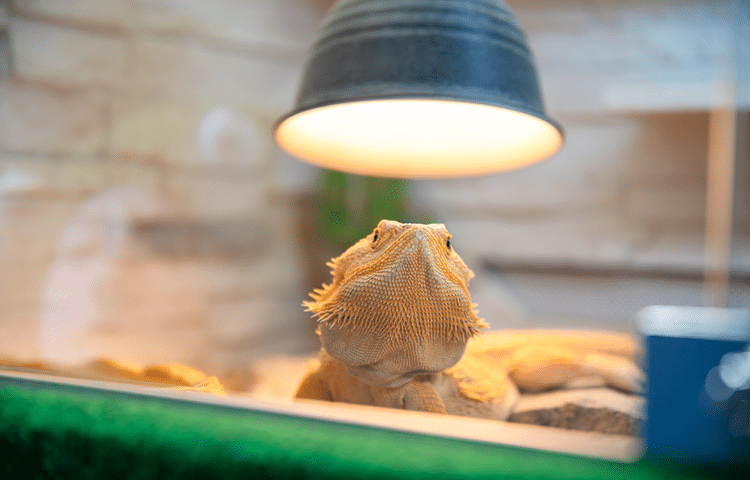
Prevention tips:
Perfect the environment: Recreate your pet’s natural home down to the last detail. Optimal temperature, humidity, and lighting are non-negotiable. And for those sun-loving reptiles, don’t skimp on those essential UVB bulbs. Your job is to make their tank a paradise!
Mimic their natural diet: Your reptile’s diet should be a culinary journey that mirrors what they’d munch on in the wild. Bugs, veggies, or a gourmet mix? Do your homework and dish out a varied, balanced menu that keeps them thriving.
Keep stress low: Stress can really mess with a reptile’s appetite. Loud noises, too much handling, or a lack of safe hiding spots can all turn up the anxiety. Let them have their peace and quiet!
2. Parasites
Parasites are pesky little invaders that can live inside or on your reptile. Internal parasites (like worms) can mess with their digestion, while external ones (like mites) irritate their skin.
What to watch for:
Internal parasites: Weight loss despite eating, diarrhoea, or vomiting.
External parasites: Tiny black or red dots (especially around the eyes or folds), constant soaking in water, or trouble shedding.
What to do:
If you suspect a parasite problem, it’s time to see your vet. For internal parasites, the vet might test a poop sample and prescribe medication. For mites or ticks, you’ll need a reptile-safe treatment and a deep clean of the enclosure to wipe out any remaining eggs.
Prevention tips:
Quarantine newbies: Keep any new reptiles separate for at least a month to watch them for any signs of illness or parasites before introducing them to your other pets. This prevents the spread of potential diseases.
Clean regularly: Spot-clean daily by removing any waste, leftover food, or debris to support a healthy environment. Deep-clean the enclosure often by thoroughly washing all surfaces, replacing bedding or substrate.
Buy from good breeders: Choose reputable sellers who prioritise the health and well-being of their reptiles. A good breeder will also be transparent about the animal’s health history and offer their guidance for continued care.
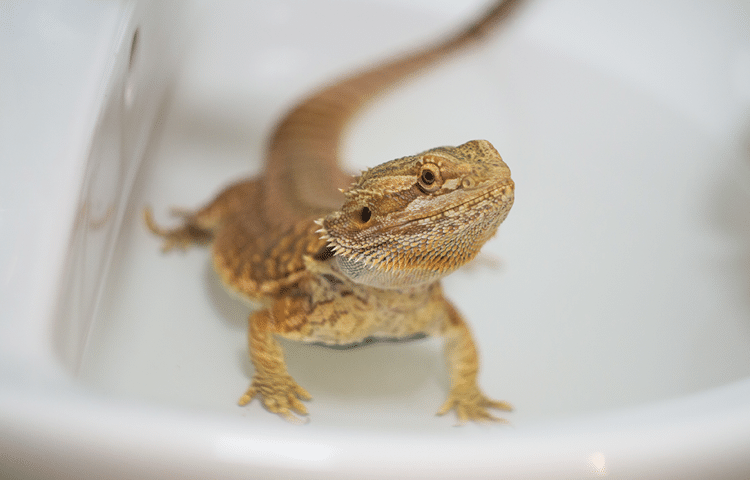
3. Constipation
Yep, reptiles can get backed up too. Constipation happens when they can’t poop, and it can get serious if left untreated.
What to watch for:
- No poop for longer than usual (know your reptile’s normal!).
- A swollen or firm belly.
- Straining without results.
- Loss of appetite or energy.
What to do:
A warm bath often helps as it relaxes their muscles and keeps them hydrated. You can gently massage their belly while they soak to encourage things to move along. If that doesn’t work, or they seem in pain, head to the vet. Serious cases might involve laxatives or treating blockages.
Prevention tips:
Hydration is key: Always have fresh water available and mist their enclosure if needed – especially for tropical species like chameleons, green tree pythons, or dart frogs.
Temperatures matter: Reptiles rely on external heat sources to properly digest their food. Make sure the temperature is correct for their species, allowing them to move between warmer and cooler areas as needed.
Safe substrate: Avoid loose materials like sand, which can accidentally get swallowed. Safer alternatives include reptile carpet, tile, and paper towels.
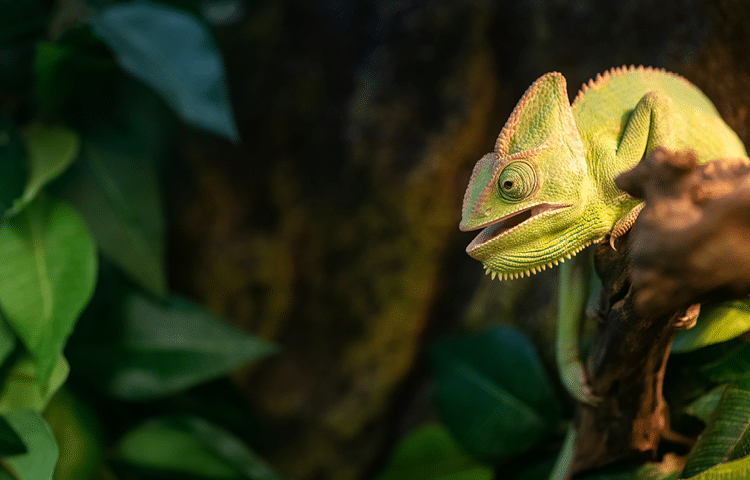
4. Respiratory infections
Reptiles can get respiratory infections from bacteria, viruses, or fungi, often caused by poor tank conditions like low temperatures, high humidity, or dirty enclosures.
What to watch for:
- Breathing with an open mouth or gasping for air.
- Wheezing or popping noises when they breathe.
- Bubbles or discharge from their nose or mouth.
- Swelling around the face or a puffed-out throat.
- Lethargy or not eating.
What to do:
If you notice these symptoms, see a vet who will typically prescribe antibiotics or other treatments. In the meantime, bump up the temperature in the tank (but stay within your reptile’s safe range!) to help their immune system.
Prevention tips:
Control the conditions: Always use a reliable thermometer and hygrometer to check and regulate the temperature and humidity levels within your reptile’s enclosure.
Let them breathe: Proper ventilation is key to preventing the build-up of harmful bacteria and mould spores in the enclosure. Stagnant, moist air can creates an ideal breeding ground for pathogens which can lead to respiratory infections.
Clean often: Regular and thorough cleaning of the entire enclosure is essential. This includes spot cleaning daily, as well as periodic deep cleans to remove any sources of infection.
5. Metabolic bone disease (MBD)
Metabolic Bone Disease (MBD) is a serious condition caused by low calcium or vitamin D3. Without these, your pet reptile’s bones can become weak and deformed.
What to watch for:
- A soft or rubbery jaw.
- Swollen limbs or “Popeye legs.”
- Trouble moving or walking.
- Twitches, tremors, or obvious deformities.
- Weakness or lying flat instead of lifting their body.
What to do:
MBD needs a vet’s help. Severe cases might need calcium or vitamin D3 injections. Long-term care includes better lighting, diet changes, and supplements.
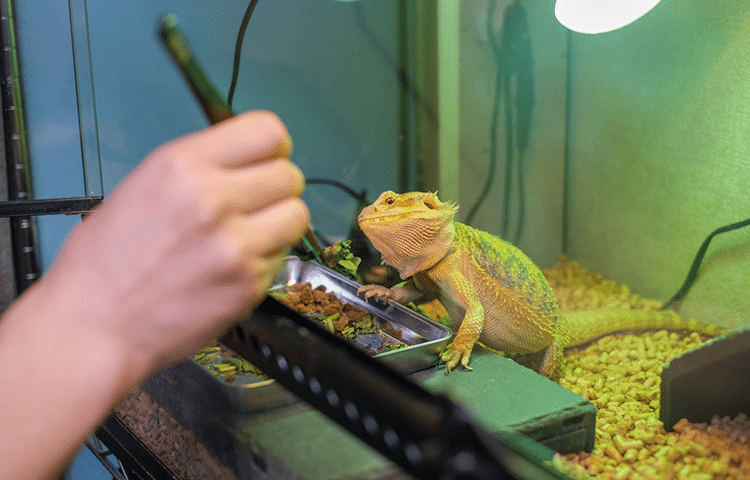
Prevention tips:
Good lighting is essential: Use a high-quality UVB bulb for reptiles that need it and replace it every 6-12 months (they lose effectiveness over time).
Add supplements: Lightly coat (or “dust”) your pet’s food with calcium powder and multivitamins to prevent deficiencies and fill in any nutritional gaps. Multivitamins can be especially helpful for reptiles with limited diets.
Feed a balanced diet: Research your reptile’s requirements and stick to a diet with the right calcium-to-phosphorus ratio. A diet rich in calcium and low in phosphorus is generally ideal for proper bone health and preventing conditions like MBD.
Keep your scaly friend safe and sound
Vet bills can add up quickly. With ExoticDirect pet insurance, you can focus on your reptile’s health without financial stress. Get peace of mind knowing you can provide the best care possible.

